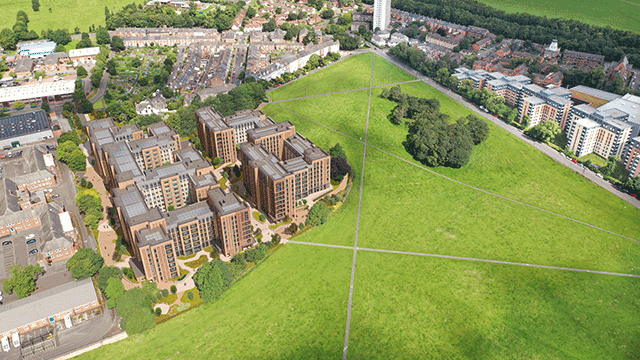The Court of Appeal is being asked to approve a new way of valuing the premiums to be paid for lease extensions and collective enfranchisements, in a test case that could affect more than a million leasehold properties, with billions of pounds said to be at stake.
The tenant of a London flat claims that the traditional method used has meant that landlords have been overpaid for years.
The dispute involves the complex valuation process involved when it comes to valuing the sums that must be paid by tenants to landlords in cases of lease extension applications and collective enfranchisement.
While the amount in dispute in the test case – which involves a lease extension for a London flat for which the Upper Tribunal (Lands Chamber) (UT) has calculated the premium at almost £1.4m – is £58,000, the far-reaching consequences of the case mean far greater sums are at stake across the country.
Opening the appeal on behalf of leaseholder Adrian Mundy today, Edwin Johnson QC said that the case involves a “serious problem” that affects all new lease claims and collective enfranchisements under the Leasehold Reform, Housing and Urban Development Act 1993.
He continued: “As such, the common point affects over a million leasehold properties, and has financial implications running to billions of pounds.”
He argues that a new mathematical model should be applied in such cases, which demonstrates that the value of a key factor in the calculation has been consistently underpriced over the years, favouring landlords.
He added: “If the Parthenia model is right, there has been a massive, and unintended, transfer of wealth from tenants to landlords.”
In this appeal, Mundy claims that the graphs of relativity – including the “industry standard” known as the Gerald Eve graph – usually used are unreliable, and instead the Parthenia model should be applied in this and future cases.
Johnson said that the search for a solution to the valuation problem has been going on for years, and is one that has “so far engaged thousands of hours of time of the tribunal, and millions of pounds in professional costs”.
He added: “The tribunal, much as they regretted this, felt unable to identify a solution to the problem. If the decision stands, the search continues.”
Before the UT, there were three combined applications, only one of which is under appeal. It found that the Parthenia model was a “clock that strikes 13” because, in one of the applications, it produced a result where the flat concerned had a higher hypothetical value without rights of extension under the 1993 Act rights than it had with them, which it considered was an impossible result.
The UT rejected the Parthenia model, and banned its use in all future cases.
However, Johnson argued that it did so on a flawed basis, as comparing the real and hypothetical values in that one case was not a comparison of like with like, as each involved “fundamentally different interests”.
He claimed that the valuation of the flat with rights was the “product of a corrupted market”, and that the Parthenia model “only struck 12 in a world where midday and midnight had been shifted by a combination of statutory intervention and the Gerald Eve graph”.
He made clear that his client is asking the court to remit the case back to the UT for the redetermination of the hypothetical value of Flat 3 without 1993 Act rights on the correct basis.
In written arguments before the court, Stephen Jourdan QC, representing landlord the Trustees of the Sloane Stanley Estate, maintains that the UT’s decision was correct and should be upheld.
The hearing is scheduled to end tomorrow, and Lady Justice Arden, Lord Justice Lewison and Lord Justice Peter Jackson are expected to reserve judgment, with a written decision to follow later in the year.
The property
The test case at the centre of the appeal involves the determination of the premium to be paid by Mundy to the Trustees of the Sloane Stanley Estate for a new lease of Flat 3, 36 Elm Park Road, London SW3. At the valuation date of 20 March 2014, the existing lease still had 23 years left to run, and, under the 1993 Act, that would be extended a further 90 years on payment of the premium.
The UT was asked to assess two key elements of that calculation in dispute between the parties: the freehold vacant possession (FHVP) value of the flat, and the value of the existing lease of the flat on the assumption that it had no rights of extension under the 1993 Act. The UT assessed the FHVP at £950,000 (which is not under challenge) and the value of the existing lease without 1993 Act rights at £435,000. Mundy is challenging that decision.
The parties are £58,000 apart on what they say the correct “marriage value” is, the tenant saying £29,000 and the landlord saying £85,000.
The premium problem
The premium payable for a lease extension under the 1993 Act is calculated using various factors, including, where the remaining term of the lease is less than 80 years, the “marriage value”. This is calculated by taking the value of the extended lease, and subtracting the value of the existing lease subject to the fictional assumption that there is no right to apply for an extension under the Act.
It is this fiction that causes the most difficulty in valuations, because there are only very few sales of houses or flats to which the 1993 Act rights do not apply that could act as comparables. As a result, valuers in such cases calculate the marriage value by applying a percentage (or “relativity”) to the freehold value of the relevant flat, and using graphs of relativity to arrive at the reliable relativity to apply in each case.
The Parthenia problem
The Parthenia model is based on data from 7,969 open market transactions of houses and flats between 1987 and 1991, when the rights of lease extension under the 1993 Act did not exist. A statistical method known as hedonic regression is then used to isolate the effect on value of the single variable of the unexpired length of the lease involved in each transaction. From this, the appropriate percentage (or “relativity”) can be calculated to apply to the freehold vacant possession value in each case.
Even though the UT did not agree that the Parthenia model was the appropriate method to use, it said that if it had, then “the use of the model would confer a very great benefit on the parties to applications for collective and individual enfranchisement… in that it would reduce the number of disputes on the question of the value of the existing lease (without rights under the 1993 Act) which in the past has been a fruitful source of disagreement and has resulted in many cases being fought before the tribunals”.
To send feedback, e-mail jess.harrold@egi.co.uk or tweet @jessharrold or @estatesgazette











